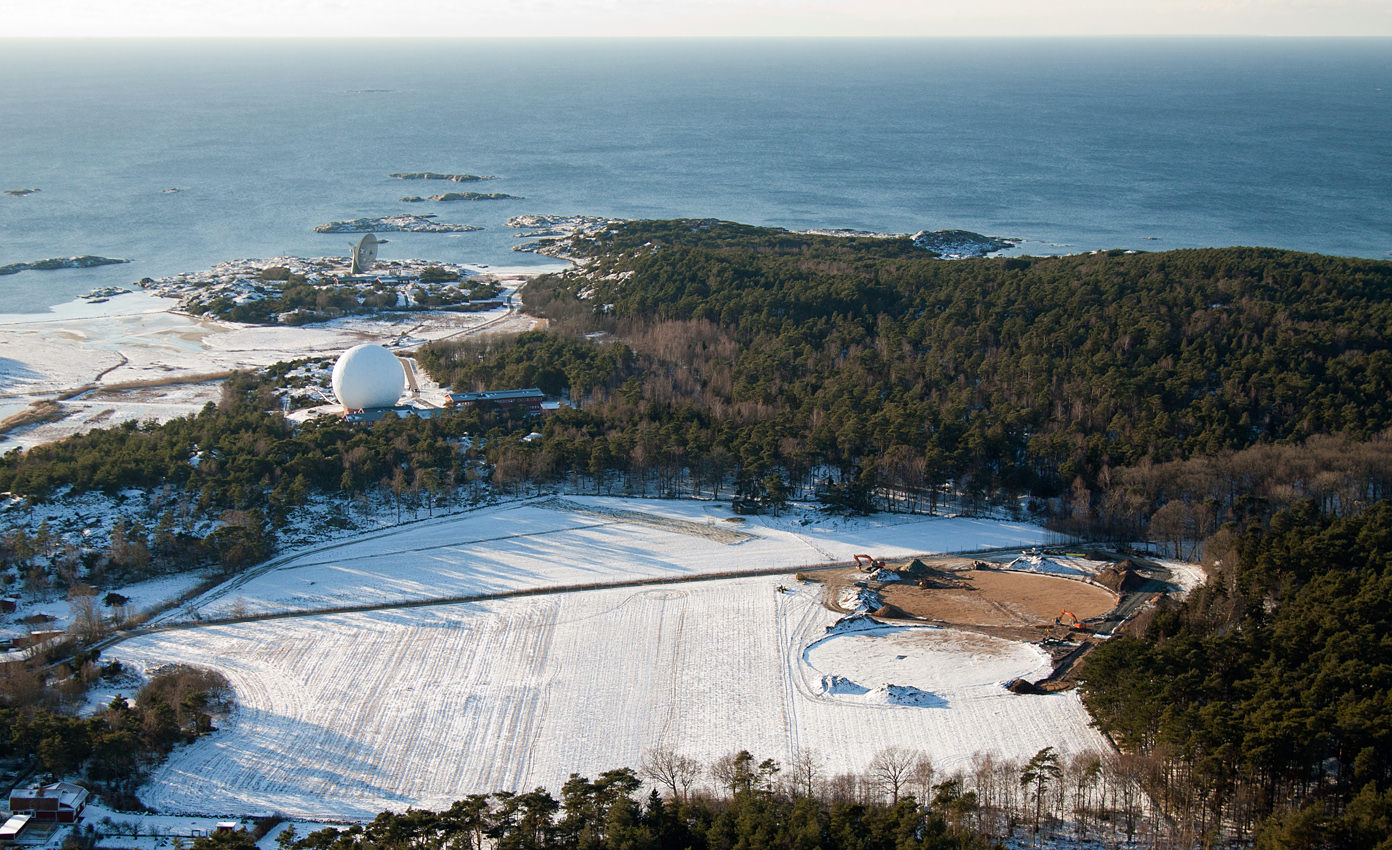[/caption]
Robert Cumming from the Onsala Space Observatory in Sweden sent us this image, letting us know that construction has officially begun for the Swedish station of the new LOFAR radio telescope. The LOw Frequency ARray is a multi-purpose sensor array, with its main purpose to search the sky at low frequencies (10-250 MHz) which will enable astronomers to see the fog of hydrogen gas that filled the universe during its first two hundred million years. It will also be able to image the regions around supermassive black holes in the centres of nearby galaxies. The headquarters are in the Netherlands, but eight stations will be spread over Europe.
This aerial photograph shows the Onsala LOFAR station site at the lower right. Behind, the white radome of the observatory’s 20-metre telescope and the dish of the 25-meter telescope by the Kattegat shore.
The two circular areas where the LOFAR station’s high-band (snow-covered) and low-band antennas will be placed are already flattened. The cold weather has delayed the next stage in the work, deploying the fibre cables, but the Onsala station should still be fully operational by mid-2011.
Onsala is LOFAR’s northernmost station and will help give the array a close to circular beam. It will also contribute some of the array’s longest baselines.
“Each LOFAR station collects and handles up to 32 terabytes of data every day,” said John Conway, professor of observational radio astronomy at Chalmers University of Technology and Vice-Director of Onsala Space Observatory. “ At Chalmers we’re working together with our European colleagues to develop new kinds of software so that we can analyse radio signals from distant sources.”
Onsala’s LOFAR station will consist of 192 small antennas which together collect radio waves from space. The signals which are registered are then transferred by fiber link to the Netherlands to be combined with data from the other stations.
You can see more images from the Onsala Observatory at the Flickr page.


Wow. What is the farthest back we can see right now? Is it the CMB? Wouldn’t this allow for another 200 million years further?
UF
No, it’s 200 M y _after_ the CMB.
The CMB is the farthest back we can see, and that’s about 300,000 yrs after the BB.
That is, until we can ‘see’ the neutrino background from the early nucleosynthesis, and even further out the gravitational waves bg!
Thanks.